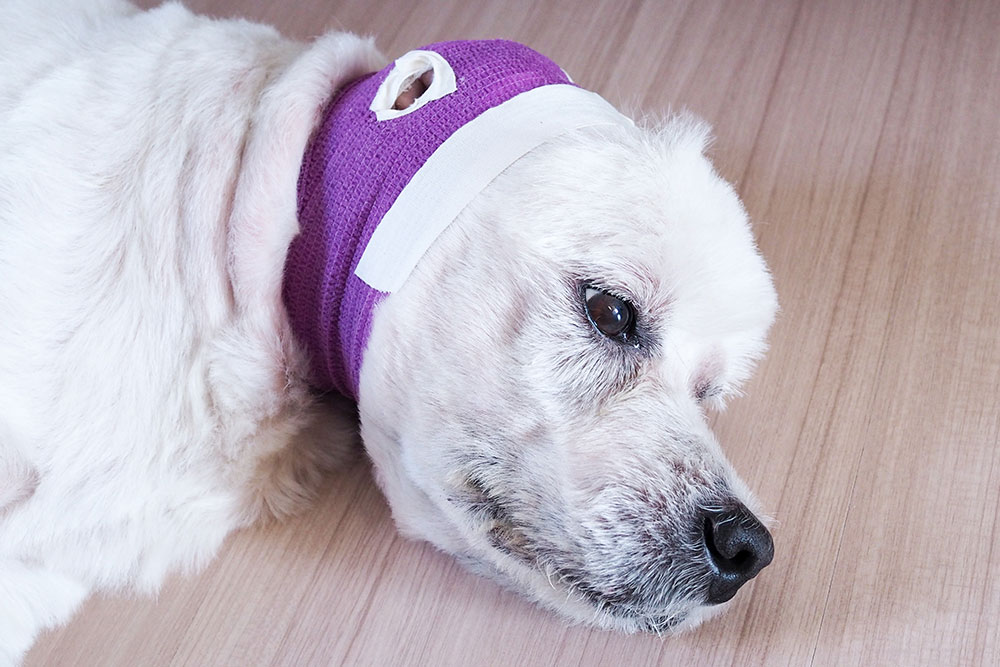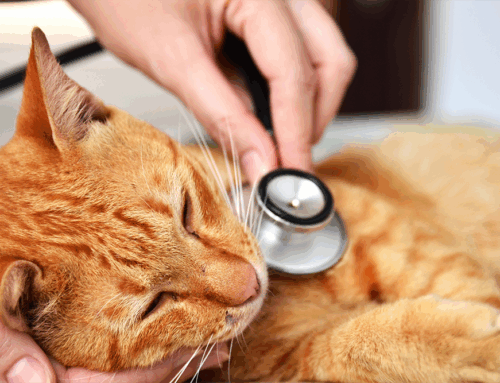Understanding and Treating Ear Hematomas in Dogs
If your dog is constantly scratching at their ears or shaking their head, there’s more at stake than just annoyance. One of the most uncomfortable and messy complications that can arise from repeated ear irritation is an ear hematoma—and yes, it’s just as unpleasant as it sounds.
At the Veterinary Emergency and Specialty Center of Northern Arizona in Flagstaff, AZ, we often see frustrated pet owners walk through our doors after dealing with weeks (or months) of itchy ears, messy ear drops, and mounting vet bills—only to discover their dog now has a big, balloon-like swelling on one ear. Let’s break down what’s happening, why it matters, and how to get it under control.
What Is an Ear Hematoma?
An ear hematoma (also called an aural hematoma) is a fluid-filled swelling on the ear flap—usually soft or firm to the touch, and often described as feeling like a water balloon beneath the skin. This happens when repeated scratching or head shaking causes small blood vessels (capillaries) in the ear to rupture, leaking blood into the space between layers of cartilage in the ear pinna.
Why It Happens:
- The underlying trigger is usually an ear infection, allergies, or ear mites—all of which make your dog’s ear itchy.
- Your dog reacts by scratching or shaking their head, over and over.
- That trauma builds pressure and eventually causes blood vessels in the ear flap to break, creating a hematoma.
The result? A swollen, often painful ear that might eventually rupture if not treated. And if your dog shakes their head hard enough? You could end up with a literal blood spatter on your walls and ceiling—like something out of a horror movie. It’s dramatic, it’s messy, and while your dog will usually be okay with treatment, it’s not something you want to deal with twice.
What Does It Look Like?
With a hematoma:
- One or both ears flap look swollen, thickened, or puffed up, often warm to the touch.
- It may be soft and squishy or firm, depending on how much blood has pooled.
- Dogs may be head-shy, flinchy, or visibly uncomfortable, especially when touched.
Without treatment, the body tries to reabsorb the blood on its own—but the process is slow and often leaves the ear with a crinkled, “cauliflower ear” appearance that may be permanent.
Why Preventing Head Shaking Is So Important
Addressing the hematoma without fixing the underlying ear issue is a temporary fix at best. Left untreated, head shaking will undo your progress, possibly re-open surgical wounds, or create a brand-new hematoma.
Here’s how to break the cycle:
- Treat the underlying cause (usually an infection or allergy).
- Prevent further trauma with supportive tools like a No Flap Ear Wrap—a soft, vet-recommended wrap that gently immobilizes floppy ears, reduces shaking, and makes ear medications easier to apply.
- Manage pain and inflammation so your dog isn’t constantly trying to paw at the ear.
Causes of Ear Hematomas
- Ear infections (bacterial or yeast)
- Environmental or food allergies
- Ear mites (especially in young or outdoor dogs)
- Foxtails or foreign bodies
- Chronic skin conditions affecting the ear canal
For more on why your dog’s ears might be itchy in the first place, explore this helpful AKC guide to ear hematomas.

How We Diagnose and Treat Ear Hematomas
Diagnosis
Our team will:
- Conduct a physical exam to evaluate the swelling.
- Use an otoscope to inspect the ear canal for infection or foreign material.
- Possibly perform a fine needle aspiration to confirm the swelling is fluid-filled and not an abscess or tumor.
Treatment Options
- Surgical Drainage & Repair (most effective for large hematomas)
- A small incision drains the blood, and multiple sutures are placed through the ear to prevent it from refilling.
- We’ll also clean and treat the infection or cause of irritation at the same time.
- A bandage or No Flap Ear Wrap helps protect healing.
- Needle Aspiration (short-term relief)
- A needle draws out the fluid, but recurrence is common without additional intervention.
- Steroid Injections
- Sometimes used to reduce inflammation in minor cases or when surgery isn’t an option.
Learn more from the American College of Veterinary Surgeons.
Preventing Future Hematomas
- Treat underlying ear conditions quickly.
- Clean your dog’s ears properly using a vet-approved method.
- Use wraps or protection for floppy-eared dogs during treatment.
- Watch for allergy symptoms like red skin, licking paws, or recurring infections.
When to See the Vet
Don’t wait to see if it goes away on its own. Schedule a visit if you notice:
- Swelling or puffiness in your dog’s ear
- Head shaking, ear flapping, or scratching
- Signs of an ear infection (discharge, smell, redness)
- Sudden pain or behavior changes when touching the ear
Hematomas are uncomfortable, and delaying care only makes things harder—and more expensive.
The Bottom Line
Ear hematomas are more than just a nuisance. They’re painful, messy, and often a symptom of a bigger problem like allergies or infection. While they can look dramatic—especially if they rupture—they’re completely treatable with the right veterinary care.
At the Veterinary Emergency and Specialty Center of Northern Arizona, we’re here to help relieve your pet’s discomfort and prevent long-term damage. Whether it’s your first ear infection or a chronic ear battle, we’ll create a treatment plan that gives both you and your dog some much-needed relief.
Worried your dog might have an ear hematoma? Contact us today.







Leave A Comment